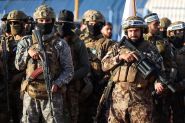S. Gemayel Meets Hochstein in Washington
- 13/11/2024
- 5 comments
- 36
- 125



Salam Zaatari 09:00

Bassam Abou Zeid 08:45


This is Beirut 27/11 20:50

This is Beirut 10:05

This is Beirut 10:00

This is Beirut 05:25

This is Beirut 27/11 22:00

This is Beirut 27/11 21:39
This is Beirut 11:00
This is Beirut 27/11 19:15
Chelsea Al Arif 27/11 17:25
Chelsea Al Arif 27/11 17:25

This is Beirut 27/11 15:55

Christiane Tager 27/11 10:00

This is Beirut 26/11 11:40

Liliane Mokbel 23/11 12:00

Maurice Matta 22/11 16:00

This is Beirut 10:30

This is Beirut 27/11 17:00

This is Beirut 27/11 13:20

This is Beirut 27/11 10:30

This is Beirut 26/11 18:00

This is Beirut 13:00

This is Beirut 01:05

This is Beirut 27/11 15:45

Roudi Abou Nader 27/11 12:25

This is Beirut 27/11 11:55

Alain E. Andrea 15/11 16:21

Vanessa Kallas 14/11 10:35

This is Beirut 06/11 19:50

Alain E. Andrea 22/10 17:49

This is Beirut 16/10 15:40

par Ici Beyrouth, 12:33

par Ici Beyrouth, 12:30

par Ici Beyrouth, 11:45

par Ici Beyrouth, 11:10

par David Sahyoun, 11:00